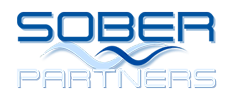Huntington Beach Detox

Drug & Alcohol Detox in Hungtington Beach, CA
Detoxification from all substances is the first step in substance abuse treatment and to beginning your journey of recovery. Sober Partners has a drug and alcohol detox in Huntington Beach that utilizes medical professionals who will help eliminate substances from your system. We understand that detoxing from drugs and alcohol can be a fearful experience.
Throughout the detox process, you are under medical supervision and are provided with intensive care. Our staff provides 24/7 monitoring to ensure you are comfortable and safe throughout your detox.
Individualized Care
At Sober Partners, we detox our clients on-site to prepare them for residential treatment and to ease them off the drugs and/or alcohol in their system.
We provide individualized care to our patients and base their treatment methods on these 4 criteria:
- Substance(s) the client is detoxing from
- The amount of substance(s) used daily prior to detox
- How long the client has been using the substance(s)
- How long the client has been using the substance(s)
- The physical condition of the client before starting detox
The main criteria above are typically answered during the phone consultation or intervention prior to coming to detox. Arrangements will be made beforehand and special accommodations can be made if necessary. We also provide women-only and men-only facilities to further individualize treatment.

Your Interventionist or Intensive Track Counselor can accompany you to the detox center and stay with you until you are settled in. A medical professional will perform a physical evaluation for all clients before they begin the detox process to determine if there are special circumstances that need to be considered.
Although detoxing from alcohol, benzodiazepines, and opiates can be dangerous and could require partial hospitalization, it is often not necessary.
Our Huntington Beach detox center evaluates each patient, creating a detox plan that will provide the most benefit in the long run. Typically, a detox will last about one week, but this time can vary. We adapt the treatment plan to each client to make sure they have a safe and comfortable detox experience.
The Detoxification Process
The procedures and protocols used in the detoxification process vary depending on if the client is abusing alcohol or drugs. There is even further variation between the treatment of different drug types.
Medications can be provided by our medical staff to lessen symptoms of withdrawal and ease your detox process. Medication dose and type will be prescribed based on the main criteria answered during the intervention or phone consultation.
In particular, medical detox is recommended if you are planning to detox from opioids, benzodiazepines, and alcohol. A medically-assisted detox addresses the physical symptoms of withdrawal.
Alcohol has a depressive effect on the central nervous system. In people who abuse alcohol, your central nervous system becomes accustomed to having alcohol in your body.
Your body works hard to keep your brain in a more awake state and to keep your nerves talking to one another. When the alcohol level suddenly drops, your brain stays in this more awakened state which causes withdrawal. Withdrawal from alcohol can be dangerous and it is recommended that you be monitored throughout the process.
To treat the alcohol withdrawal symptoms medication is typically used. Benzodiazepines may help treat anxiety, insomnia, and seizures. An anti-seizure medication and antipsychotics may also be helpful in making sure your detox is as comfortable as possible.
Opioids and opiates are drugs that are typically used for pain relief but are often abused in the United States. Opiates are chemical compounds that come from natural plant matter while opioids are chemical compounds that are made in a lab.
Drugs that are considered opioids and opiates include:
- Codeine
- Vicodin
- Dilaudid
- Methadone
- Demerol
- Morphine
- Opium
- Percocet
- Oxycontin
- Heroin
- Fentanyl
Once the person becomes dependent on opioids or opiates, nerve receptors can adapt to having the drug in your system causing a feeling of euphoria and/or relief from pain. Once stopping the drug the receptors may need to readapt which causes withdrawal.
Although withdrawal from these drugs is not life-threatening, it can be extremely uncomfortable without a proper medical detox. Typically, to make for an easier detox either methadone or buprenorphine are prescribed and tapered. This means that the dose is reduced gradually until the person no longer takes the drug.
Benzodiazepines are prescribed for symptoms of insomnia, anxiety, panic disorders, seizure disorders, muscle tensions, and muscle spasms. This classification of drugs are considered a Schedule IV controlled substances by the Drug Enforcement Adminstration (DEA).
Drugs that are considered benzodiazepines include:
- Xanax
- Klonopin
- Restoril
- Ativan
- Valium
Benzodiazepines affect the central nervous system, in particular the GABA receptors. These drugs make GABA binding more effective which is why benzodiazepines create a therapeutic effect. In people who abuse these drugs, the central nervous system becomes used to having the drug in your system and causes symptoms of withdrawal.
Unlike opioid or opiate withdrawal, benzodiazepine withdrawl can be dangerous. Withdrawal from these drugs can lead to seizuers and psychosis, making it important to have a medical detox.
To medically detox from benzodiazepines you are typically prescribed something like Klonopin to slowly taper off the drug. Additionally, you may be prescribed Phenobarbital to help prevent seizures.

Get Help at our Huntington Beach Detox Center
If you or a loved one are struggling with addiction to drugs or alcohol, consider detoxing with Sober Partners in Huntington Beach, CA. Detox is the beginning of addiction treatment and is vital in the process of finding recovery.
Our qualified and specialized professionals are prepared to help you go through a smooth detox process. We offer individualized treatment to fit your specific needs and struggles with different substances.
Contact us today to find out more about our detox center in Huntington Beach CA and other services. Our team of specialists can help guide you through our treatment program.
